Imagine walking into a store and being instantly drawn to a product, not because of its design or features, but because of its color. Or think about the iconic brands you recognize instantly, just by a specific shade or hue. That’s the magnetic pull of color. The same goes for your website. That’s why choosing the perfect branding color palette is so hard. In the vast universe of branding, colors are not mere decorative elements; they are silent storytellers, weaving narratives that resonate with our emotions, memories, and decisions. Dive into the intricate world of branding color palettes and discover how the right shades can transform a brand from being just a name to an unforgettable experience.
1. The Science Behind Colors in Branding
Colors are more than just visual stimuli; they have the power to evoke emotions, memories, and even influence decisions. In the realm of branding, understanding the nuances of color can be the difference between blending in and standing out.
Color Psychology and Its Role in Branding
Every color has a story to tell. For instance, blue often symbolizes trust, calm, and reliability. It’s no coincidence that many financial institutions and tech companies opt for shades of blue in their branding. On the other hand, red can signify passion, urgency, or even danger. This makes it a popular choice for brands that want to convey energy, excitement, or prompt immediate action.
When selecting a color palette for branding, it’s essential to consider the emotions and associations each color evokes. This ensures that the brand’s message aligns with the feelings the colors inspire in the audience.
How Different Colors Evoke Specific Emotions and Associations
- Yellow: Often associated with happiness, optimism, and warmth. Brands looking to convey positivity and cheerfulness might gravitate towards this color.
- Green: Symbolizes growth, nature, and health. It’s a go-to color for brands in the wellness, organic, or environmental sectors.
- Purple: Conjures feelings of luxury, royalty, and creativity. Brands that want to exude sophistication or artistic flair often choose purple.
- Black: Represents elegance, power, and mystery. High-end luxury brands frequently use black to signify exclusivity and premium quality.
Incorporating these color associations into branding ensures that the brand resonates with its target audience on a deeper, more emotional level. It’s not just about looking good; it’s about feeling right.
2. 20 Inspiring Branding Color Palettes
In branding, the right color palette can anchor a brand’s identity and resonate deeply with its audience. As we explore these 20 curated branding color palettes, we’ll see how each combination can uniquely position a brand, from evoking the depth of a cave to the vibrancy of a sunlit dune. Each palette is a tool, a choice, and an opportunity.
1. Wonderful Cave
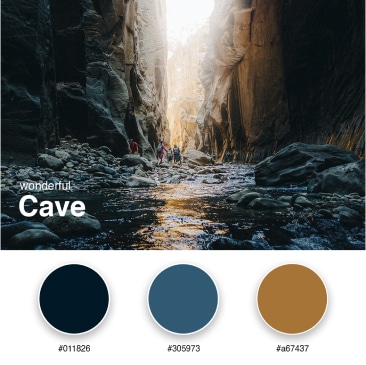
The “Wonderful Cave” branding color palette combines deep blues reminiscent of the darkest corners of a cave with a warm earthy brown. This palette evokes feelings of mystery, exploration, and the wonders of nature. For brands aiming to establish a profound and exploratory identity on their website, this color palette for branding is an excellent choice.
2. Orange Dunes
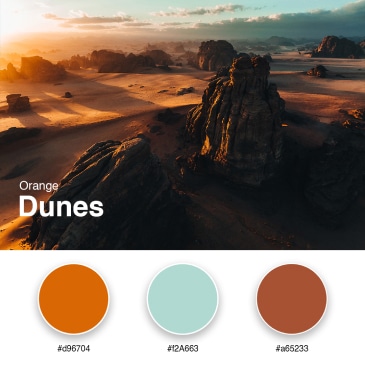
Embrace the warmth and vibrancy of the ‘Orange Dunes’. This palette, with its gradient of oranges, captures the essence of sunlit dunes at the golden hour. It suggests a brand that’s dynamic, energetic, and filled with adventurous spirit. Ideal for brands that want to radiate warmth, optimism, and a zest for life.
3. Submarine Temperature

Featuring cool oceanic blues combined with a contrasting warm brown, the “Submarine Temperature” palette is perfect for brands aiming for a balance between depth, calmness, and a touch of warmth. This color palette for branding can give your website a serene yet engaging appearance.
4. Sky with Sand
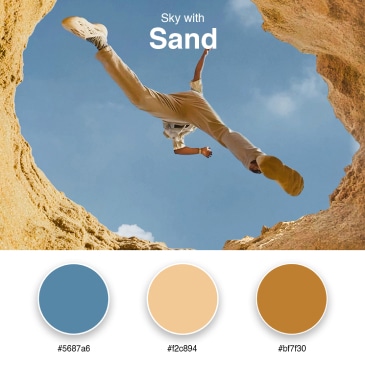
Experience the serene embrace of the ‘Sky with Sand’. A harmonious blend of expansive sky blue and the comforting tones of sandy beige, this palette is ideal for brands that want to convey reliability, serenity, and a connection to nature. It’s a gentle reminder of peaceful coastal landscapes and undisturbed shores.
5. Europe Feeling’s

Embark on a journey with the ‘Europe Feeling’s’ palette. A sophisticated mix of coastal blue, lush countryside green, and a neutral cream, it encapsulates the diverse landscapes, cultures, and rich history of Europe. Perfect for brands that value tradition, diversity, and a touch of continental elegance.
6. Tropical Blue
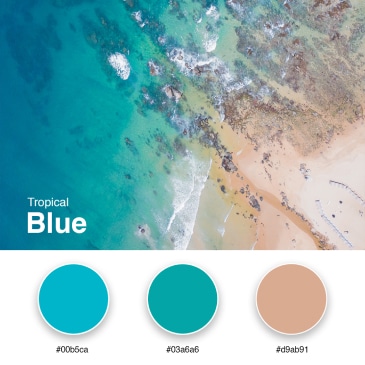
Drench your brand in the refreshing hues of ‘Tropical Blue’. With shades reminiscent of clear tropical waters and a hint of sun-kissed peach, this palette is perfect for brands that want to convey relaxation, luxury, and a perpetual vacation vibe.
7. Turkey Landscape
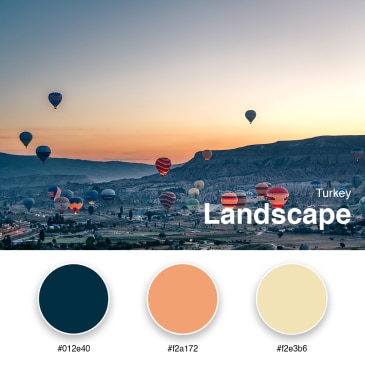
Discover the rich tapestry of the ‘Turkey Landscape’. Deep ocean blue, sun-kissed peach, and a soft beige come together to capture the essence of Turkey’s diverse landscapes, from its pristine beaches to its ancient, historic architecture. Ideal for brands that value depth, history, and cultural richness.
8. Delicious Orange
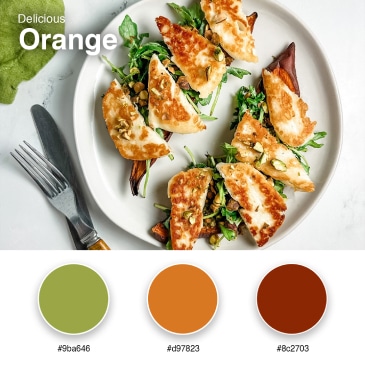
Indulge in the zesty allure of ‘Delicious Orange’. A palette bursting with flavor and energy, it’s ideal for brands that want to convey creativity, innovation, and a touch of playful zest. It’s a reminder of autumn harvests, festive moods, and the invigorating touch of sunrise.
9. Colorful Kiwi

“Colorful Kiwi” offers bright greens and yellows with a grounding brown. Fresh, lively, and perfect for brands that want to convey growth, vitality, and innovation on their website. This branding color palette is a burst of energy.
10. Vintage Purple
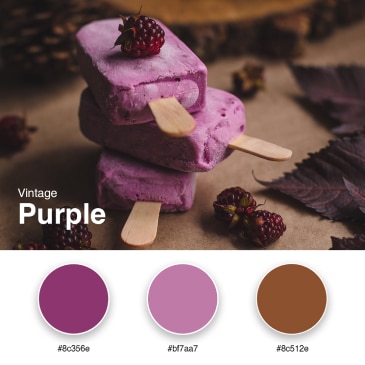
A nostalgic blend of purple and brown, “Vintage Purple” is ideal for brands aiming for a touch of vintage charm combined with modern elegance on their website. This color palette for branding seamlessly merges the past with the present.
11.
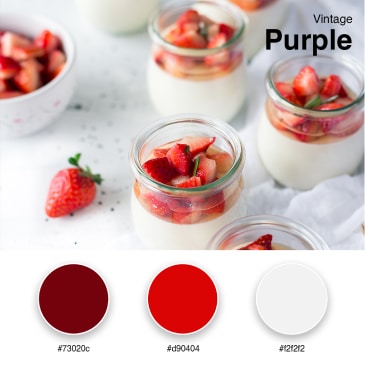
Ignite passion with this bold palette. A fiery red contrasted with a pristine white creates a striking visual that’s both bold and balanced. Perfect for brands that want to make a statement, stand out, and leave a lasting impression.
12. Enchanted Night
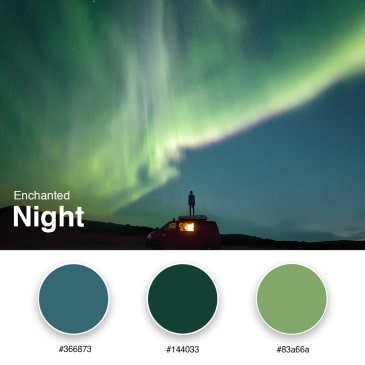
Lose yourself in the magic of ‘Enchanted Night’. Mystical blues and greens come together to evoke feelings of magic, mystery, and the tranquil beauty of nighttime landscapes. Ideal for brands that value depth, wonder, and the allure of the unknown.
13. Sunflower Yellow
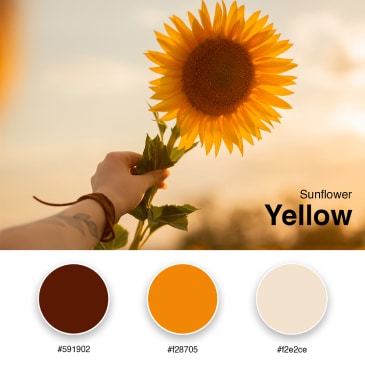
As bright and cheerful as a field of sunflowers, the “Sunflower Yellow” palette is ideal for brands that want to convey optimism, happiness, and warmth on their website. This branding color palette radiates positivity.
14. Pink Mountains
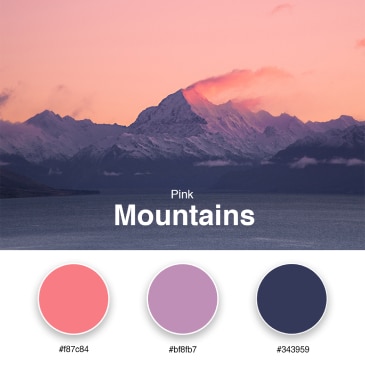
Elevate your brand with the ‘Pink Mountains’. Soft, rosy pinks paired with a deep, contemplative blue create a palette that’s both tender and strong. Perfect for brands that want to convey a balance of gentleness, resilience, and majestic beauty.
15. Pink Lilies
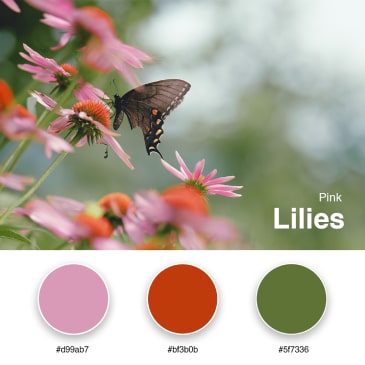
Bloom with the floral-inspired ‘Pink Lilies’. A palette that juxtaposes soft pinks with bold, earthy tones, it’s ideal for brands that want to convey beauty, elegance, and the wild, untamed heart of nature.
16. Black and Grey Nature
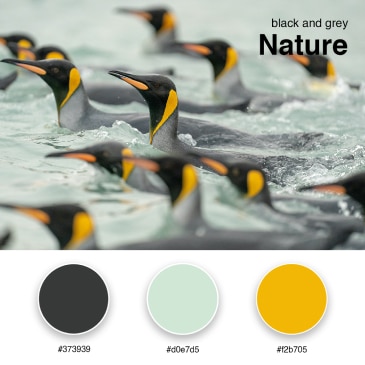
Embrace modern minimalism with ‘Black and Grey Nature’. A muted palette with a pop of radiant yellow, it’s perfect for brands aiming for a sleek, contemporary look with just the right touch of vibrancy and warmth.
17. Colorful feather
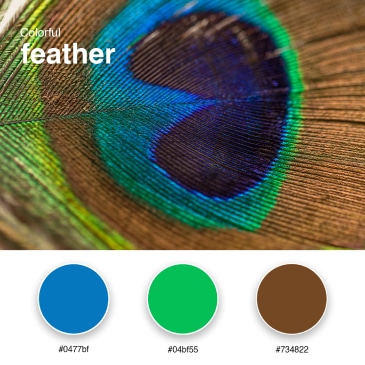
Bright blues paired with a rustic brown, “Colorful feather” is lively, fresh, and perfect for brands that want to convey creativity and freedom on their website. This branding color palette is a celebration of color and imagination.
18. Winter Blue
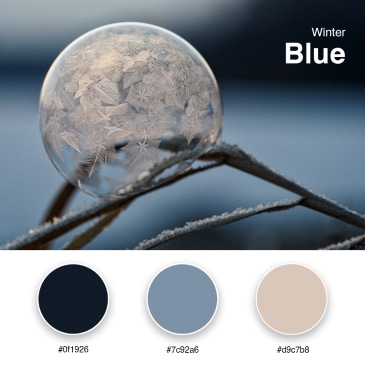
Wrap your brand in the serene beauty of ‘Winter Blue’. Cool, calming blues paired with a soft, comforting beige capture the tranquility and elegance of a pristine winter landscape. Perfect for brands that value calmness, elegance, and the quiet beauty of nature.
19. Micro Yellow
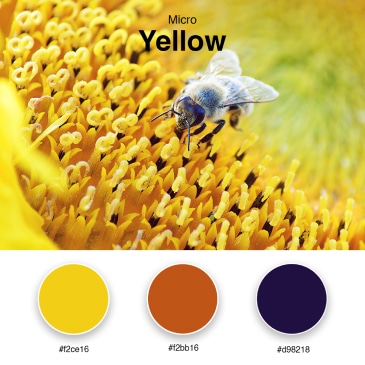
Illuminate your brand’s identity with the vibrant ‘Micro Yellow’. A gradient of sunlit yellows that’s both warm and invigorating, this palette is perfect for brands that want to convey energy, innovation, and a touch of sunny optimism.
20. Colorful Greece
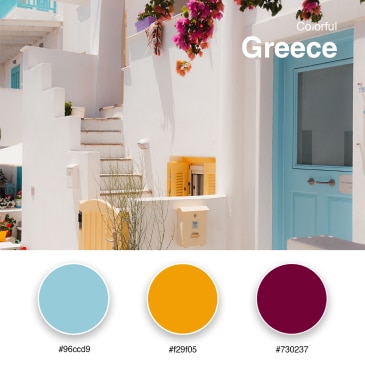
A blend of Mediterranean azure, sunlit orange, and deep wine, “Colorful Greece” captures the essence of Greece, making it ideal for brands that want to convey history, luxury, and beauty on their website. This color palette for branding is a journey through time and culture.
3. 10 Tips for Implementing Your Chosen branding color palette
Implementing a color palette goes beyond merely selecting colors; it’s about ensuring those colors are applied effectively and consistently across all brand touchpoints. Here are some tips to help you seamlessly integrate your chosen branding color palette:
1. Create a Brand Style Guide
Begin by documenting your color palette in a brand style guide. This guide should detail the specific color codes (RGB, CMYK, HEX) for each hue, ensuring that there’s no variation regardless of where the colors are applied. It can also provide guidelines on how each color should be used in different contexts.
- Why is this important for your Branding Color Palette: A brand style guide solidifies your branding color palette as a cornerstone of your brand’s visual identity. It ensures the exact hues are used uniformly, upholding brand consistency and recognition.
2. Prioritize Readability
When applying your color palette to text, ensure that there’s sufficient contrast between the text and its background. This ensures readability and makes your content accessible to those with visual impairments.
- Why is this important for your branding color palette: Ensuring readability in your branding color palette is essential for clear communication, making your content accessible and engaging for a wider audience.
3. Test Across Different Mediums
Colors can appear differently on various mediums, from digital screens to printed materials. Always test your colors across all platforms to ensure they remain consistent and retain their impact.
- Why is this important for your branding color palette: Testing your branding color palette across different mediums guarantees consistent representation of your brand, maintaining a coherent and unified image in both digital and print formats.
4. Use Tools and Resources
Leverage digital tools like color palette generators or contrast checkers. These can help in refining your palette, ensuring it’s both aesthetically pleasing and functional.
- Why is this important for your branding color palette: Leveraging digital tools helps in perfecting your branding color palette, balancing aesthetic appeal with practical functionality for a stronger brand presence.
5. Consider Cultural Implications
Remember that colors can have different meanings and connotations in various cultures. If your brand caters to a global audience, ensure your chosen colors resonate positively across different cultural contexts.
- Why is this important for your branding color palette: Being mindful of cultural meanings in your branding color palette choice ensures positive global brand perception and avoids potential cultural insensitivities.
6. Stay Consistent, But Be Flexible
While consistency is crucial, it’s also essential to allow for some flexibility. As your brand grows and evolves, you might find the need to tweak or expand your color palette. Stay open to change, but ensure that any modifications align with your brand’s core identity.
- Why is this important for your branding color palette: Balancing consistency with flexibility in your branding color palette fosters brand recognition while allowing for necessary adjustments that reflect brand growth and market changes.
7. Train Your Team
Ensure that everyone involved in creating brand materials, from designers to marketers, understands and adheres to the color guidelines. Regular training sessions or workshops can be beneficial.
- Why is this important for your branding color palette: Ensuring that all team members are aligned with your branding color palette guidelines guarantees a consistent brand image across all customer touchpoints.
8. Evaluate and Iterate
Periodically review the effectiveness of your color palette. Is it helping achieve your branding goals? Is it resonating with your target audience? Based on feedback and results, don’t hesitate to refine and iterate.
- Why is this important for your branding color palette: Regular assessment and adjustment of your branding color palette keep it effective and relevant, responding adaptively to customer feedback and market trends.
9. Limit the Number of Colors
While it’s tempting to use many colors, especially when they all look good, it’s best to limit the number. Too many colors can make designs look cluttered and confuse the brand message. Stick to your primary, secondary, and accent colors for a cohesive look.
- Why is this important for your branding color palette: A streamlined branding color palette avoids visual clutter and strengthens brand recognition, creating a more memorable and distinct brand identity.
10. Remember Emotional Impact
Colors evoke emotions. Always go back to the emotional response you want from your audience and ensure your color choices align with that. Whether you want to convey trust, excitement, luxury, or calm, your colors should consistently reflect that emotion.
In essence, implementing a branding color palette is a blend of art, science, and strategy. By following these tips and being mindful of both aesthetics and functionality, you can ensure that your chosen colors not only define your brand but also drive its success.
- Why is this important for your branding color palette: The emotional impact of your branding color palette plays a crucial role in audience engagement, influencing how consumers feel about and connect with your brand.
4. Key Considerations When Choosing a Branding Color Palette
Branding is a reflection of a company’s ethos, values, and promises, and the color palette stands as one of its most potent tools. It silently communicates, shaping emotions, moods, and perceptions, weaving a story that the audience can resonate with.
At the heart of a compelling palette is the brand’s core personality and values. If a brand exudes youthful energy, it might naturally lean towards bright, dynamic hues. In contrast, a brand built on trust and maturity might find its voice in more subdued, calming shades.
However, it’s not just about the brand’s voice; it’s also about the ears of the listeners. Different cultures and demographics interpret colors in varied ways. The serenity and purity white brings in one part of the world might be a symbol of mourning in another. This cultural tapestry makes it crucial to deeply understand the audience’s preferences and perceptions.
While individuality is essential, there’s wisdom in acknowledging industry standards. The trust-evoking blues that dominate the financial sector or the earthy greens that many eco-friendly businesses favor provide a familiar touchpoint for audiences. These conventions, though unwritten, can offer valuable guidance.
Beyond aesthetics, colors are deeply emotional. They have the power to evoke feelings, from the fiery passion of reds to the tranquil calmness of blues. Aligning the palette with the emotions the brand aims to evoke can create a deeper connection with the audience.
Trends come and go. While it’s natural to be drawn to contemporary color trends, it’s essential to ask if these colors will stand the test of time. A palette should not only be a reflection of the present but also have an enduring appeal that carries the brand’s legacy forward.
5. The Anatomy of a Branding Color Palette
Color palettes, at first glance, might seem like simple collections of hues. However, when dissected, each color serves a specific purpose, playing a unique role in communicating a brand’s message. Understanding the anatomy of a branding color palette is crucial for any business aiming to create a cohesive and impactful brand identity. Let’s break down the components:
1. Primary Colors
These are the dominant colors in your palette and will be the most associated with your brand. They’re the colors you’ll use most frequently across various branding elements, from your logo to your website’s primary background. Primary colors set the overall tone and mood for your brand, so they should align closely with your brand’s core values and message.
2. Secondary Colors
Complementing the primary colors, secondary colors provide depth and variety to your palette. They’re used to break the monotony and add layers to your design. While they don’t take center stage, secondary colors are essential in creating a balanced and harmonious look. They can be used in backgrounds, graphics, or even typography to accentuate and highlight.
3. Accent Colors
These are the colors used sparingly but strategically. Accent colors are like the cherry on top – they draw attention to specific elements you want to highlight, such as call-to-action buttons or special announcements. They should contrast well with both primary and secondary colors, ensuring that they stand out when used.
4. Neutral Colors
Often overlooked but equally important, neutral colors like whites, blacks, grays, or beiges provide a backdrop against which all other colors shine. They’re used in backgrounds, text, or to create space and balance in design. Neutral colors ensure that your palette isn’t overwhelming and maintains a clean, professional look.
5. Tints, Shades, and Tones
Beyond the basic colors, a comprehensive palette also considers the tints (color + white), shades (color + black), and tones (color + gray) of the chosen hues. These variations provide additional flexibility and depth, allowing for a more nuanced design approach. They can be particularly useful in detailed graphics or when trying to convey a mood gradient.
6. Consistency is Key
While having a range of colors provides flexibility, it’s essential to maintain consistency in their application. This ensures that the brand remains recognizable and trustworthy across all platforms and mediums. A style guide can be invaluable here, providing clear guidelines on how and where each color should be used.
In conclusion, a branding color palette is more than just a random selection of colors. It’s a well-thought-out assembly, with each color playing a specific role in telling the brand’s story. By understanding the anatomy of a palette, brands can ensure they’re not just choosing colors they like, but colors that work cohesively to convey their message effectively and memorably.
6. Common Mistakes to Avoid When Deciding Your Branding Color Palette
1. The Balance of Simplicity and Significance
Branding success often lies in simplicity. While a plethora of colors might seem enticing, it can overshadow a brand’s core message. A concise and well-defined palette ensures immediate brand recognition, fostering a deeper connection with the audience. However, simplicity shouldn’t come at the expense of cultural sensitivity. For global brands, understanding color interpretations across cultures is paramount. The prosperity symbolized by red in Asian contexts, for instance, might be perceived as caution in Western cultures. Brands must tread carefully, ensuring their palette resonates universally.
2. Timelessness Over Trends
The design world is ever-evolving, with new color trends emerging frequently. While staying updated is essential, brands should prioritize enduring appeal over fleeting trends. Colors should not only resonate with the brand’s core values but also stand the test of time, ensuring long-term relevance. Consistency further amplifies this timelessness. Any deviation from the chosen palette, be it introducing new shades or inconsistent application, can dilute brand identity and confuse the audience.
3. Inclusivity and Audience Engagement
In today’s diverse world, a brand’s palette should be accessible to all, including those with visual impairments. This commitment to inclusivity not only broadens brand reach but also showcases a brand’s ethos. Beyond design considerations, engaging with the target audience offers invaluable insights. Regular feedback can provide fresh perspectives, ensuring the chosen colors genuinely resonate and reflect the audience’s preferences.
In essence, while color selection offers a unique opportunity for brands to express their identity, it’s a journey fraught with potential pitfalls. By focusing on simplicity, timelessness, and inclusivity, brands can craft a palette that truly embodies their essence and resonates deeply with their audience.
Conclusion
Crafting the perfect branding color palette is both an art and a science. It’s a delicate balance of understanding the brand’s essence, resonating with the target audience, and ensuring versatility and accessibility. By being aware of common pitfalls and approaching the process with a blend of introspection and research, brands can create a palette that not only captivates but also stands the test of time, becoming an integral part of their legacy.
Meta Description: Dive into the intricate world of branding color palettes. Discover the science behind color choices, their emotional impact, and how the right shades can elevate a brand’s identity. Explore curated palettes and practical tips for effective implementation.
FAQ:
Why is color important in branding?
Color plays a pivotal role in branding as it can evoke emotions, set the mood, and influence perceptions. A well-chosen color palette can enhance brand recognition and resonate deeply with the target audience.
How many colors should be in a branding color palette?
A typical branding color palette includes primary, secondary, and accent colors. While there’s no fixed number, it’s essential to maintain a balance. Generally, 3-5 core colors, complemented by tints, shades, and tones, offer flexibility without overwhelming the design.
How do cultural differences impact color choices in branding?
Different cultures can have varied interpretations and emotional responses to colors. For instance, while white might symbolize purity in some cultures, it can represent mourning in others. It’s crucial to understand and respect these nuances, especially if the brand caters to a global audience.
Can I change my brand’s color palette over time?
Yes, brands can evolve, and so can their color palettes. However, any change should be strategic, ensuring that the brand remains recognizable. It’s also essential to communicate the reasons for the change to the audience, ensuring a smooth transition.
How do I ensure my color palette is accessible to everyone, including those with visual impairments?
Consider using tools like contrast checkers to ensure there’s sufficient differentiation between colors. Additionally, it’s beneficial to be aware of common color blindness types and select a palette that remains distinct and clear to all viewers.
